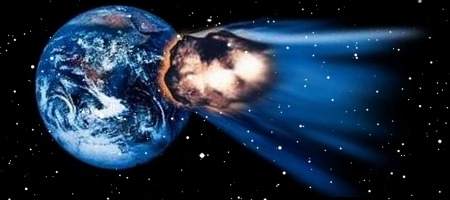Two US scientists say they’ve come up with a method of deflecting or destroying asteroids that could have dealt with last Friday’s in less than an hour.

Something ten times larger than 2012 DA14 would take about a year to shift, with evaporation starting at a distance as far away as the sun.
“We have to come to grips with discussing these issues in a logical and rational way,” says UC Santa Barbara physicist and professor Philip M. Lubin, who began work on DE-STAR, or Directed Energy Solar Targeting of Asteroids an exploRation, a year ago.
“We need to be proactive rather than reactive in dealing with threats. Duck and cover is not an option. We can actually do something about it and it’s credible to do something. So let’s begin along this path. Let’s start small and work our way up. There is no need to break the bank to start.”
Described as a ‘directed energy orbital defense system’, DE-STAR is designed to harness some of the power of the sun and convert it into a massive phased array of laser beams that can destroy, or evaporate, asteroids posing a potential threat to Earth.
It can also be used to deflect an asteroid away from Earth, or into the sun – or to a conventient spot where it can be mined.
“This system is not some far-out idea from Star Trek,” says Gary B. Hughes of California Polytechnic State University. “All the components of this system pretty much exist today. Maybe not quite at the scale that we’d need – scaling up would be the challenge – but the basic elements are all there and ready to go.”
The larger the system, the greater its capabilities. For example, a 100-meter version could start nudging comets or asteroids out of their orbits,” Hughes said. But a 10-kilometer version could deliver 1.4 megatons of energy per day to its target, says Lubin, obliterating an asteroid 500 meters across in one year.
A system this size could also boost the speed of interplanetary travel or power advanced ion drive systems for deep space travel.
“There are large asteroids and comets that cross the Earth’s orbit, and some very dangerous ones going to hit the Earth eventually,” says Hughes. “Many have hit in the past and many will hit in the future. We should feel compelled to do something about the risk. Realistic solutions need to be considered, and this is definitely one of those.”






